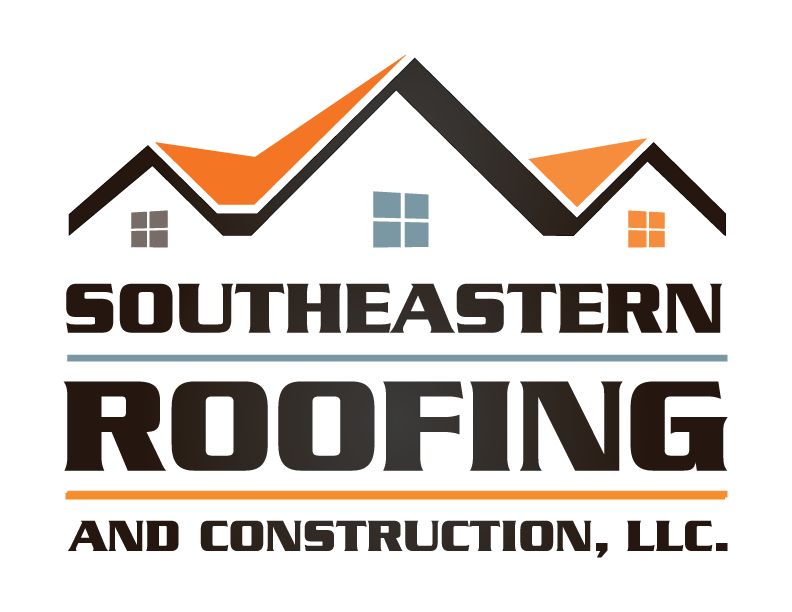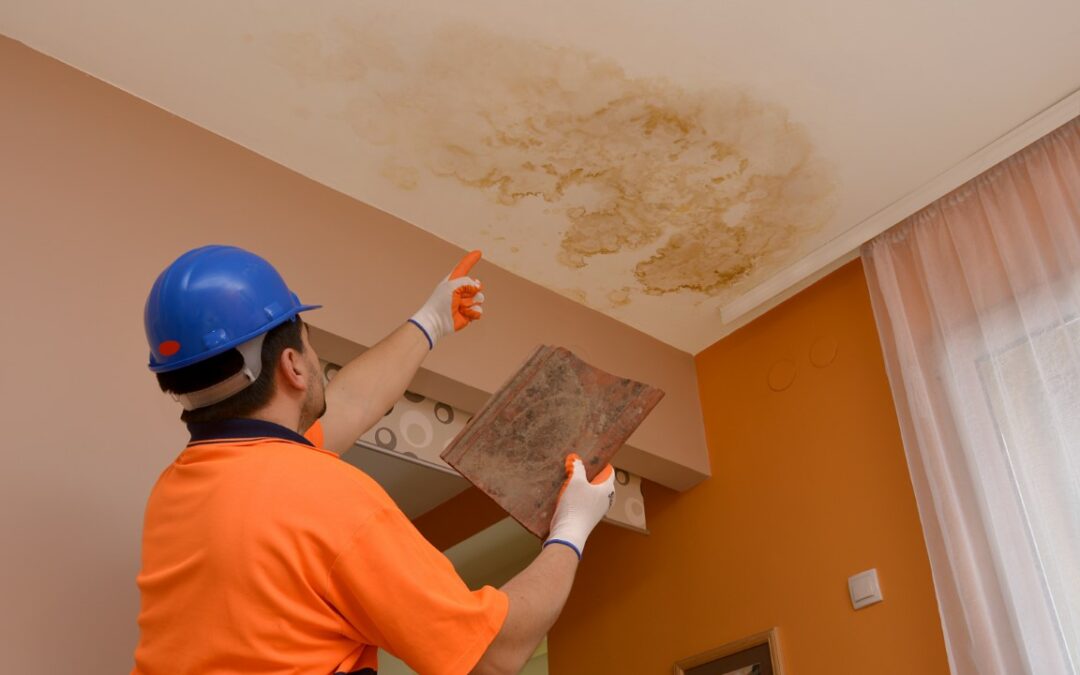We’ve all seen the signs – cracked or missing shingles, water stains on the ceiling, a sagging or uneven roof. These telltale indicators of severe roof damage can’t be ignored.
Excessive granule loss, leaks or drips during rainfall, mold or mildew growth, and roof deck damage further compound the problem.
In this article, we’ll explore why these signs are so significant, revealing the extent of the damage and the urgent need for repair. Join us as we delve into the world of roofing woes and find solutions for a secure and cozy home.
Key Takeaways
- Cracked or missing shingles can compromise the roof’s integrity and lead to water infiltration and stains on the ceiling.
- Sagging or uneven roofs indicate compromised structural integrity and increase the risk of roof collapse.
- Excessive granule loss on a shingle roof accelerates the deterioration of the asphalt layer and leads to premature aging and potential leaks.
- Mold and mildew growth on roofs can cause severe respiratory problems, and proper ventilation and moisture control are crucial to prevent it.
Cracked or Missing Shingles
When inspecting a roof for severe damage, one of the key signs to look out for is cracked or missing shingles, as they can greatly compromise the roof’s integrity and protection against the elements.
There are several causes of shingle damage, including harsh weather conditions, aging, improper installation, and lack of maintenance. Harsh winds, heavy rain, and hail can loosen or dislodge shingles, creating cracks or causing them to go missing altogether. Aging shingles can become brittle and prone to cracking, while improper installation can result in shingles that aren’t securely fastened to the roof.
To repair cracked shingles, it’s essential to first remove any loose or damaged shingles and replace them with new ones. This will ensure that the roof remains structurally sound and able to withstand further damage.
Transitioning into the subsequent section about ‘water stains on the ceiling’, water infiltration through cracked or missing shingles can lead to water stains on the interior ceiling, indicating a more serious roofing issue.
Water Stains on the Ceiling
As we continue our examination of severe roof damage, another significant indicator is the presence of water stains on the ceiling. Water stains on the ceiling are clear evidence of a leaky roof that needs immediate attention. These stains can occur due to various causes, including damaged or missing shingles, cracked flashing, clogged gutters, or even improper installation. When water infiltrates the roof, it seeps through the layers and eventually reaches the ceiling, leaving behind unsightly stains.
To prevent water stains on the ceiling, regular roof maintenance is crucial. This includes inspecting the roof for any signs of damage, repairing or replacing damaged shingles, ensuring proper installation of flashing, and keeping the gutters clean and free from debris. By addressing these issues promptly, you can prevent water stains and avoid further damage to your roof.
Moving on to the next topic, let’s explore the signs of a sagging or uneven roof.
Sagging or Uneven Roof
When a roof begins to sag or becomes uneven, it’s a clear indication that the structural integrity of the roof has been compromised. This can present a significant danger as it increases the potential for roof collapse.
Sagging or uneven roofs should be addressed immediately to prevent further damage and ensure the safety of the building and its occupants.
Structural Integrity Compromised
Our roof’s structural integrity is compromised when it sags or becomes uneven, posing a significant risk to the safety and stability of our home.
When the structure of our roof is compromised, it can lead to severe roof damage consequences and potential dangers to our living space.
One of the signs of a compromised roof structure is sagging or unevenness. This can occur due to various factors, such as weakened or damaged support beams, excessive weight on the roof, or inadequate construction.
Sagging or unevenness in the roof can be visually observed from the outside or inside of our home. It may manifest as a noticeable dip or depression in the roofline or as an uneven ceiling.
These signs shouldn’t be ignored, as they indicate a potential collapse or further damage to our roof, which can have serious implications for our safety and the overall condition of our home.
Therefore, it’s crucial to address any signs of a compromised roof structure promptly and seek professional assistance to ensure the stability and integrity of our roof.
Potential for Collapse
One indicator of severe roof damage is the potential for collapse. This can occur when a roof sags or becomes uneven. The risk assessment for collapse is crucial, as it poses a significant danger to the occupants and the overall structure of the building.
When a roof sags or becomes uneven, it indicates that the structural integrity of the roof has been compromised. This can be caused by various factors such as excessive weight, water damage, or weakened support systems.
To prevent collapse and ensure the safety of the building, preventative measures should be taken. Regular inspections by professionals can identify signs of sagging or unevenness early on, allowing for timely repairs. Reinforcement of the roof structure and removal of any excess weight can also help mitigate the risk of collapse.
Excessive Granule Loss
Excessive granule loss on a roof is a clear indication of severe damage. The granules on a shingle roof serve an important purpose – they protect the underlying asphalt layer from the damaging effects of the sun’s ultraviolet rays. When granules are lost, the asphalt layer is exposed, making it vulnerable to deterioration.
Several factors can contribute to granule loss, such as age, weathering, and poor-quality shingles. Additionally, improper installation techniques can also cause granules to become loose and dislodge.
The impact of granule loss on the lifespan of a roof is significant. Without the protective layer of granules, the asphalt layer deteriorates faster, leading to premature aging and potential leaks.
As we move on to the next section, we’ll explore the consequences of these leaks or drips during rainfall and how they can further exacerbate roof damage.
Leaks or Drips During Rainfall
Moving from the previous subtopic of excessive granule loss, we now delve into the issue of leaks or drips during rainfall, which can further exacerbate severe roof damage. Leaks or drips are clear indicators of roof problems and should be addressed immediately to prevent further deterioration.
These signs of water penetration can lead to structural damage, mold growth, and compromised insulation. To mitigate the damaging effects of leaks or drips, it’s crucial to consider repair options and prevention measures.
Repair options may include patching or replacing damaged shingles, repairing flashing, or sealing cracks and gaps. Prevention measures involve regular roof inspections, maintenance, and addressing any issues promptly. Additionally, keeping gutters clear and ensuring proper drainage can help prevent water accumulation and subsequent leaks.
Taking proactive steps to address leaks or drips during rainfall is essential to maintain the integrity and longevity of your roof.
Mold or Mildew Growth
When it comes to severe roof damage, mold or mildew growth is a critical sign that shouldn’t be ignored. Not only can mold and mildew cause structural issues, but they also pose serious health risks to occupants.
Mold thrives in damp and humid environments, making it a common problem in areas with roof leaks or poor ventilation. Understanding the causes of mildew and the health risks associated with mold growth is essential in addressing severe roof damage.
Health Risks of Mold
Mold growth poses significant health risks to individuals living in homes with severe roof damage. When water leaks into the house through a damaged roof, it creates the perfect environment for mold or mildew to thrive.
Exposure to mold spores can lead to a range of health issues, particularly for those with allergies, asthma, or weakened immune systems. Common symptoms include coughing, wheezing, nasal congestion, throat irritation, and skin rashes. Prolonged mold exposure can also cause more severe respiratory problems and even lead to fungal infections in the lungs.
To prevent mold growth and minimize health risks, it’s crucial to address any roof damage promptly and ensure proper ventilation and moisture control within the home. Regular inspections, prompt repairs, and adequate ventilation systems are essential prevention measures to maintain a healthy living environment.
Causes of Mildew
Identifying the causes of mildew growth is crucial in understanding the factors that contribute to severe roof damage.
One of the main causes of moisture that leads to mildew growth on roofs is poor ventilation. When air is unable to circulate properly, it can become trapped and condense, creating a moist environment that’s ideal for mildew to thrive.
Another common cause is water leaks or intrusion, which can occur due to damaged or improperly installed roofing materials.
Additionally, high humidity levels can contribute to the growth of mildew.
To prevent mildew growth, it’s important to address these causes of moisture. This can be done by ensuring proper ventilation in the attic or roof space, promptly repairing any water leaks, and controlling indoor humidity levels through the use of dehumidifiers or proper air conditioning.
Taking these preventive measures will help protect your roof from severe damage caused by mildew growth.
Roof Deck Damage
One common sign of severe roof damage is the presence of sagging or buckling in the roof deck. The roof deck is an essential component of the roof structure, providing support and stability to the entire system. When the roof deck is damaged, it can compromise the integrity of the entire roof, leading to further issues and potential safety hazards.
Signs of roof deck damage include visible sagging or bowing in the roof surface, as well as the presence of cracks or splits in the decking material. If left unaddressed, roof deck damage can worsen over time, resulting in structural instability and the need for extensive roof deck repair.
It’s crucial to promptly identify and address these signs to prevent further damage and ensure the long-term stability of the roof structure.
Conclusion
In conclusion, the signs mentioned above, such as cracked or missing shingles, water stains on the ceiling, sagging or uneven roof, excessive granule loss, leaks or drips during rainfall, mold or mildew growth, and roof deck damage, are strong indicators of severe roof damage.
These visual cues can help homeowners identify potential issues and take necessary actions to prevent further damage and ensure their roof’s integrity and longevity.

